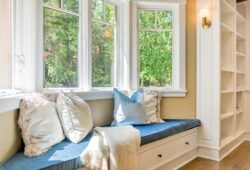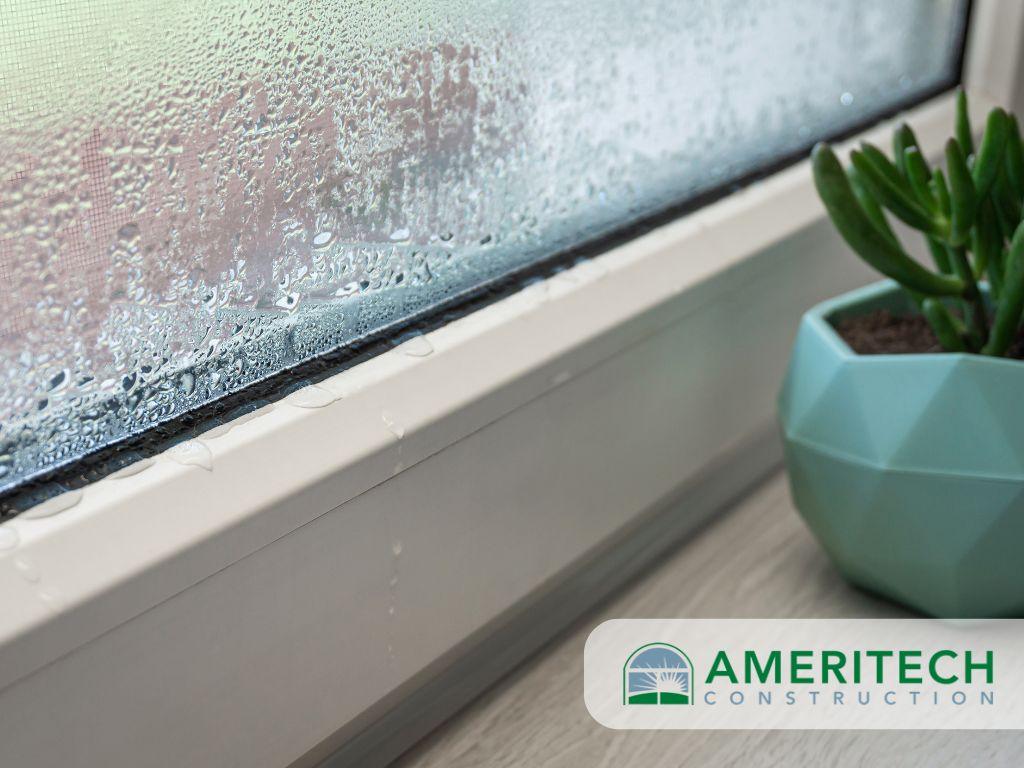Space-Saving Tips for Small Bay Windows
Small bay windows are a charming addition to any home, offering a unique way to bring in natural light and add architectural interest.
However, these windows can sometimes pose challenges when it comes to maximizing space, especially in smaller rooms.
Here are some practical tips for homeowners to optimize their small bay windows while enhancing both functionality and style.
A Quick Glance
- Incorporate built-in seating for added space.
- Utilize shelving and storage solutions.
- Choose the right furniture.
- Maximize vertical space.
- Enhance light and airflow.
- Create a functional and inviting bay window nook.
- Opt for low maintenance and efficient window treatments.
- Choose complementing colors and design elements.
- Consult with design professionals for custom solutions.
The Benefits of Small Bay Windows
Small bay windows, with their unique angles and projections, offer several benefits that can significantly enhance a home’s aesthetic and functionality.
These windows are great for adding space and providing extra light, making rooms feel larger and brighter.
For homeowners looking to enhance their home’s curb appeal and interior, bay windows or bow windows offer a versatile design that fits both traditional and contemporary homes, bringing both charm and energy efficiency to the space.
By understanding these benefits, you can better utilize your small bay windows to create an inviting and efficient living area.
Tip #1: Incorporate Built-In Seating for Added Space
A window seat is a fantastic addition to any small bay window. It provides a cozy spot to relax while maximizing the use of available space.
This built-in feature not only adds seating but also offers storage options beneath the seat, keeping the area clutter-free and adding extra functionality.
When choosing a window seat, consider styles that complement the rest of the room, whether modern or traditional.
For example, using soft fabrics and cushions can make the window seat a comfortable nook, perfect for reading or enjoying the view.
This approach not only provides extra light from the bay window but also utilizes the added space effectively.
Tip #2: Utilize Shelving and Storage Solutions
To make the most of the area around small bay windows, consider installing custom shelving or storage units.
Floating shelves or built-in cabinets on either side of the window can provide practical storage solutions without taking up floor space. This is particularly useful in living rooms or bedrooms where space is at a premium.
Shelving not only adds functionality but also creates a visual frame around the window, enhancing its architectural interest.
Additionally, these storage solutions can be designed to match the home’s interior style, whether you’re aiming for a minimalist look or something more ornate.
By adding these elements, you not only create more storage but also enhance the window’s appeal and the room’s overall design.
Tip #3: Choose the Right Furniture
When working with small bay windows, selecting the right furniture is key to maximizing space. Opt for compact, multi-functional pieces that do not overwhelm the area.
Consider using a small table, slim console, or even low seating that can be easily moved around. This is especially important in rooms where space is limited, such as kitchens or bedrooms.
Placing furniture strategically near the bay window can help maintain an open, airy feel, while still providing necessary functionality.
For example, a small round table near the bay window can serve as a cozy breakfast nook or a casual workspace.
Choosing furniture that matches the style of the window—whether it’s a bay or bow window—ensures a cohesive and aesthetically pleasing look.
Tip #4: Maximize Vertical Space
Maximizing vertical space around small bay windows is essential to creating the illusion of a larger room.
One effective method is to use tall curtains or vertical blinds that draw the eye upward, enhancing the window’s depth and adding to the room’s height.
This approach is particularly useful in spaces with lower ceilings or when trying to make a small room feel larger.
Additionally, consider using light, airy fabrics for curtains that allow more natural light to filter through, providing extra light and brightening up the room.
This not only enhances the window’s function but also complements the overall aesthetic, providing a clean and modern look.
Tip #5: Enhance Light and Airflow
Choosing the right window types for small bay windows is essential for maximizing light and airflow.
Casement windows and double-hung windows are excellent choices, offering both ventilation and energy efficiency.
Double hung windows allow both sashes to open, enhancing airflow, while casement windows provide great ventilation in spaces like kitchens and bathrooms.
For added character, consider incorporating a garden window or arranging three or more windows in your bay and bow windows configuration.
This setup not only enhances curb appeal but also helps provide extra light and create a more spacious feel.
These options deliver significant benefits in terms of long term performance and design options, ensuring both beauty and functionality in your home.
Tip #6: Create a Functional and Inviting Bay Window Nook
Transforming a small bay window area into a functional nook can significantly enhance the room’s usability.
Whether the goal is to create a reading nook, a small dining area, or a workspace, using three windows in a bay arrangement provides a cozy yet open feel.
Consider adding a small, sturdy table with a couple of chairs or a bench with hidden storage to maintain an uncluttered appearance.
Using bow windows or picture windows can also help to make the space feel larger and more connected to the home’s exterior.
A well-designed nook can serve multiple purposes, from a quiet retreat to a social gathering spot, enhancing both the function and style of your home.
Tip #7: Opt for Low-maintenance and Efficient Window Treatments
When selecting window treatments for small bay windows, consider options that are both low maintenance and aesthetically pleasing. Blinds, shades, and shutters that are easy to clean and operate are ideal for these spaces.
For a more elegant touch, french doors with glass panels can be installed alongside bay windows, providing a seamless transition between indoor and outdoor spaces while maintaining natural light.
If opting for replacement windows, look for those with easy-clean features and durable materials that withstand regular use.
This not only simplifies maintenance but also ensures the windows retain their architectural interest and charm over time.
Tip #8: Choose Complementing Colors and Design Elements
Incorporating color and design elements that complement small bay windows can greatly enhance their appeal.
Light, neutral colors are often the best windows to provide an open, airy feel, making the room seem larger.
For those looking to make a bold statement, consider contrasting the window trim with the wall color or adding vibrant cushions and throws to the window seat.
Additionally, using complementary hardware and fixtures that match the overall style of the room—be it modern or traditional—can tie the entire space together.
Thoughtfully chosen color options and design details can turn small bay windows into a standout feature of your home.
Tip #9: Consult with Design Professionals for Custom Solutions
For homeowners looking to maximize the potential of their small bay windows, consulting with design professionals can provide invaluable insights and customized solutions.
Professionals can offer tailored advice on everything from window types and treatments to room layout and decor, ensuring that the bay windows complement both the interior and exterior of the home.
They can also suggest the most efficient ways to install new windows or replacement windows that align with the homeowner’s vision and the house’s overall aesthetic.
By leveraging their expertise, homeowners can achieve a polished, cohesive look that enhances the functionality and beauty of their bay windows.
Wrapping Up
Small bay windows can be transformed into stylish and functional features with the right window types, smart storage, and effective use of light and space.
By enhancing these areas, homeowners can add more light, create usable space, and boost their home’s overall appeal.
Ready to enhance your small bay windows? Contact Ameritech Construction today to explore custom window solutions that fit your style and needs.










